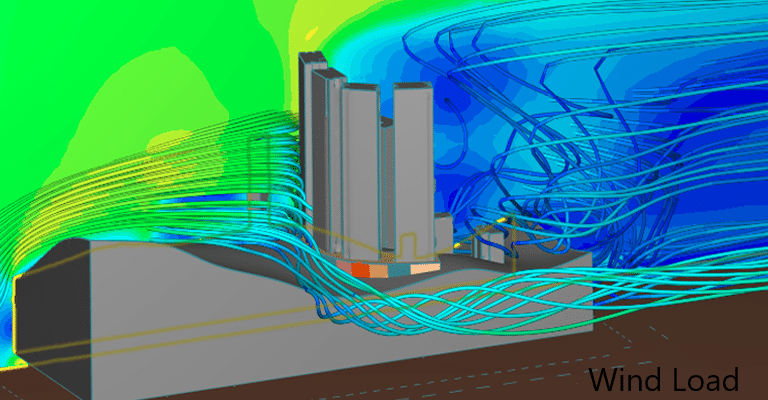Transverse loads acting on structures must be absorbed by transverse load support systems, such as braces, split walls, frames, etc. All buildings to be constructed must have transverse load-bearing systems.
The effects of lateral loads, such as wind and seismic loads, become critical as the height of the building increases. Different types of structural systems as described in the article 14 Types of Structural Forms for Tall Buildings be implemented in tall buildings as needed.
Let's discuss the different types of lateral loads that act on structures. The following types of lateral loads can be observed.
- wind loads
- Seismic loads
- Water
- Land loads
- Rated loads
wind loads
Wind is an inevitable lateral load that acts on structures. They become critical as the building height increases. The wind pressure exerted on the building and the bending moment at the base level increase as the height of the building increases.

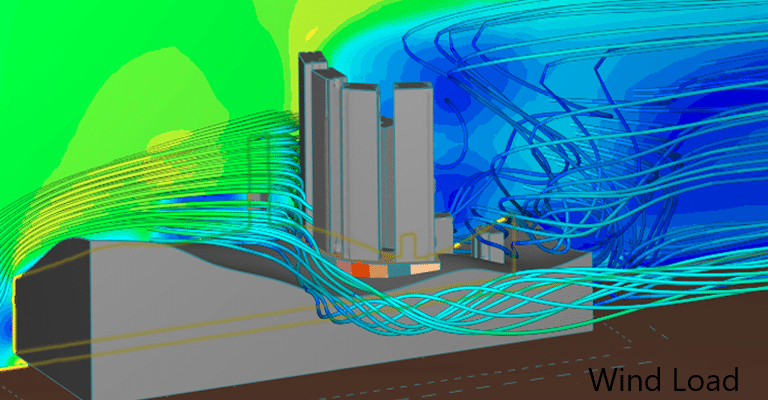
The variation in wind pressure is not uniform across the height of the building. The rate of increase decreases with altitude. However, for small buildings there is a different loading pattern.
The following figure shows the typical variation of wind loads on tall structures.
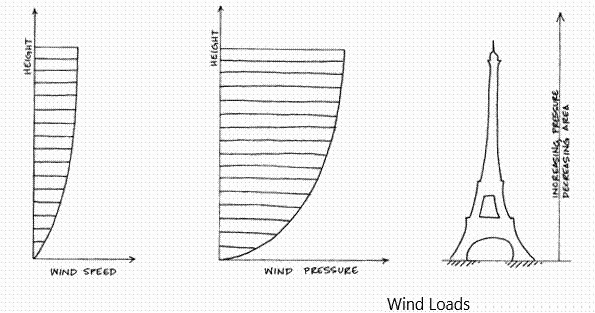
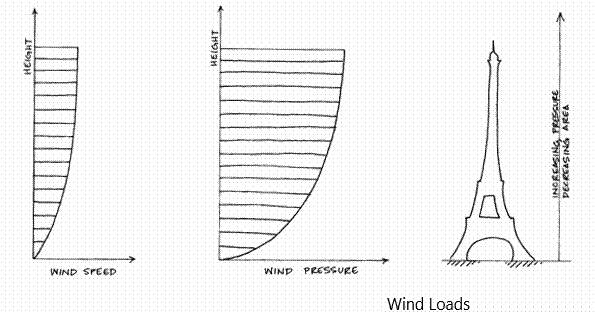
The variation in wind pressure must be calculated based on the relevant standards. To calculate wind impacts, wind speed at the location, conditions in the surrounding area, etc. are typically taken into account.
The following figure shows the method of applying wind loads to small buildings.


Different wind loads can be observed in smaller buildings. In steel buildings in particular, horizontal pressures, upward and downward vertical pressures and suction forces act on the rear wall.
Because steel elements have a lower stiffness than a concrete element in a design of a similar nature, much attention must be paid to winds in the design of steel buildings.
The following standards are used worldwide for the design of wind loads
- CP3 Chapter V Part 2: 1972 – ( 3 second wind gust speed )
- BS 6399 Part 2: 1997 – ( Hourly average wind speed )
- BS EN 1991-1-4:2005 – ( 10-minute average wind speed )
- AS/NZS 1170.2: 2002 – ( 3 second wind gust speed )
Wind tunnel testing
Generally, when building a structure, wind pressure is applied to it in two perpendicular directions. Additionally, wind loads are calculated based on factors that are assumed to represent the surrounding environment. However, these assumptions would not reflect the actual behavior of the structures.
Cities are developing rapidly. They change suddenly. This affects the wind flow pattern.
When planning taller buildings, it is very important to take actual environmental conditions into account when planning for wind energy.
Correct assessment of lateral loads in tall buildings is very important. Even if the assessment is correct to a certain extent, there must be a method to verify the structure's behavior under impacts.
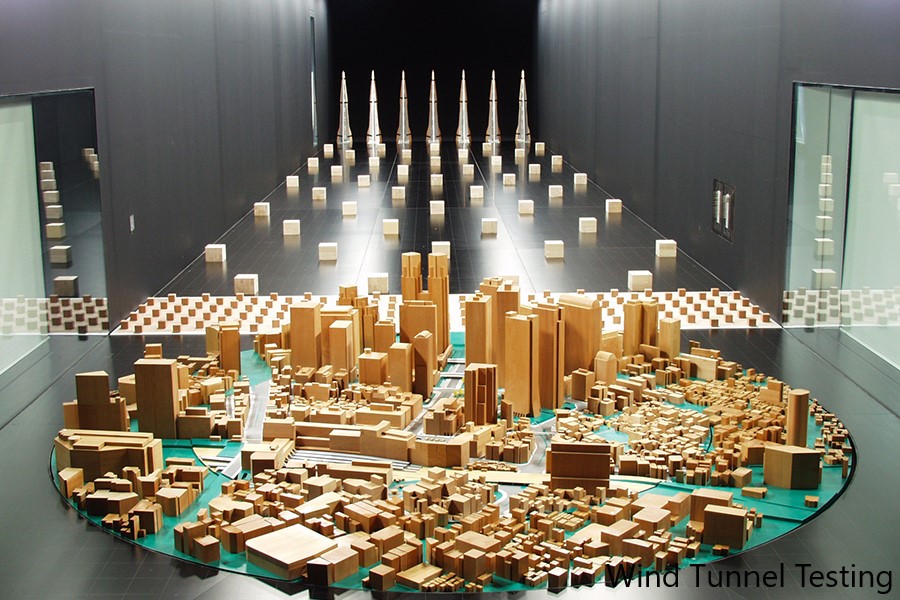

With this in mind, tests are carried out in a wind tunnel to verify the stresses in the structural element using a scale model of the real structure.
For tall buildings, carrying out tests in a wind tunnel is extremely important to ensure that the structure behaves according to the load applied in the computational analysis model.
Seismic loads as lateral loads
There are seven main plates on Earth. We are on one of these signs. The movement of one plate over another causes vibrations and, as a result, an earthquake.
The closer the plate boundary is, the greater the magnitude of the earthquake. Seismic zones are defined depending on the distance to the plate boundary.
The magnitude of the seismic load is calculated based on these seismic zones.
There are different regulations for calculating the seismic load on a structure.
Seismic loads according to UBC 1997
The following procedure can be used to calculate the basic transverse loads acting on a building.
- Structure classification: Depending on the type of structure, seismic factors can be found in Table 16-N.
- Determine the important factor for Table 16-K
- Using the soil profile type and Sesimci zone factor from Table 16-K, determine the Ca and Cv values from Tables 16-Q and 16-R, respectively.
- Determine the structural period of Equation 30-8
- Calculate the base shear from Equation 30-4
- Check the maximum shear force from Equation 30-5
- Check the minimum shear force from Equation 30-6
- Determine the concentrated force from Equation 30-14
- Find the vertical distribution of the shear forces from Equation 30-13
After calculating the lateral load, we can perform the analysis. This is a type of static analysis method. The calculated shear force can be applied to each floor. In this type of analysis, computational analysis is more convenient.
There are also other methods such as response spectrum analysis and time history analysis. They are also commonly used by civil engineers.
Water loads as transverse loads
When designing water tanks, dams, or other structures to hold liquids, we use the same method as when applying water pressure.
Particular attention must be paid to stresses caused by water pressure in earthquake situations. If earthquakes need to be taken into account, the necessary changes must be made to the water pressure profile.
When designing dams, spillways, spillway gates, etc., pressure fluctuations with height caused by the earthquake are taken into account.
The article Water Pressure Caused by Earthquakes Discuss the method for calculating the pressure change due to a seismic event.
Earth loads as lateral loads on buildings or other structures
If it is necessary to retain earth, the necessary calculations must be made to determine the correct earth pressure to be applied to the structures.
In general, structures are initially designed to be stable. Stability is then checked.
- To turn
- Sliding systems
- Inspiring
Furthermore, it is necessary to control the contact pressure under the base.
The required safety factors must be met in accordance with the relevant design standard. Generally, the following safety factors are taken into consideration during design.
- Turnaround = 1.5
- Slip = 1.5
- Elevator = 1.2
The article Structure stability analysis discusses in detail the methods that must be followed in stability calculations.
Depending on the fastening conditions, the selection of the appropriate lateral earth pressure coefficient is very important. Otherwise, incorrect results will occur.
- Active state
- In rest
- Passive state
The article Calculation of stability of retaining walls explains the method of calculating pressure coefficients and provides a practical example for better understanding.
Furthermore, the following equations are used to calculate the pressure coefficients.
In rest
Ko = 1-sinφ
Active pressure
Ka = (1-sinφ) / (1+sinφ)
Passive pressure
Kp = (1+sinφ) / (1-sinφ)
The article Lateral Earth Pressure Coefficient The calculation of the lateral pressure coefficient and its application are discussed in more detail.
Active and passive pressure can be easily distinguished. As the soil moves toward the structure, an active pressure condition is created. As the structure moves toward the ground, passive pressure is created.
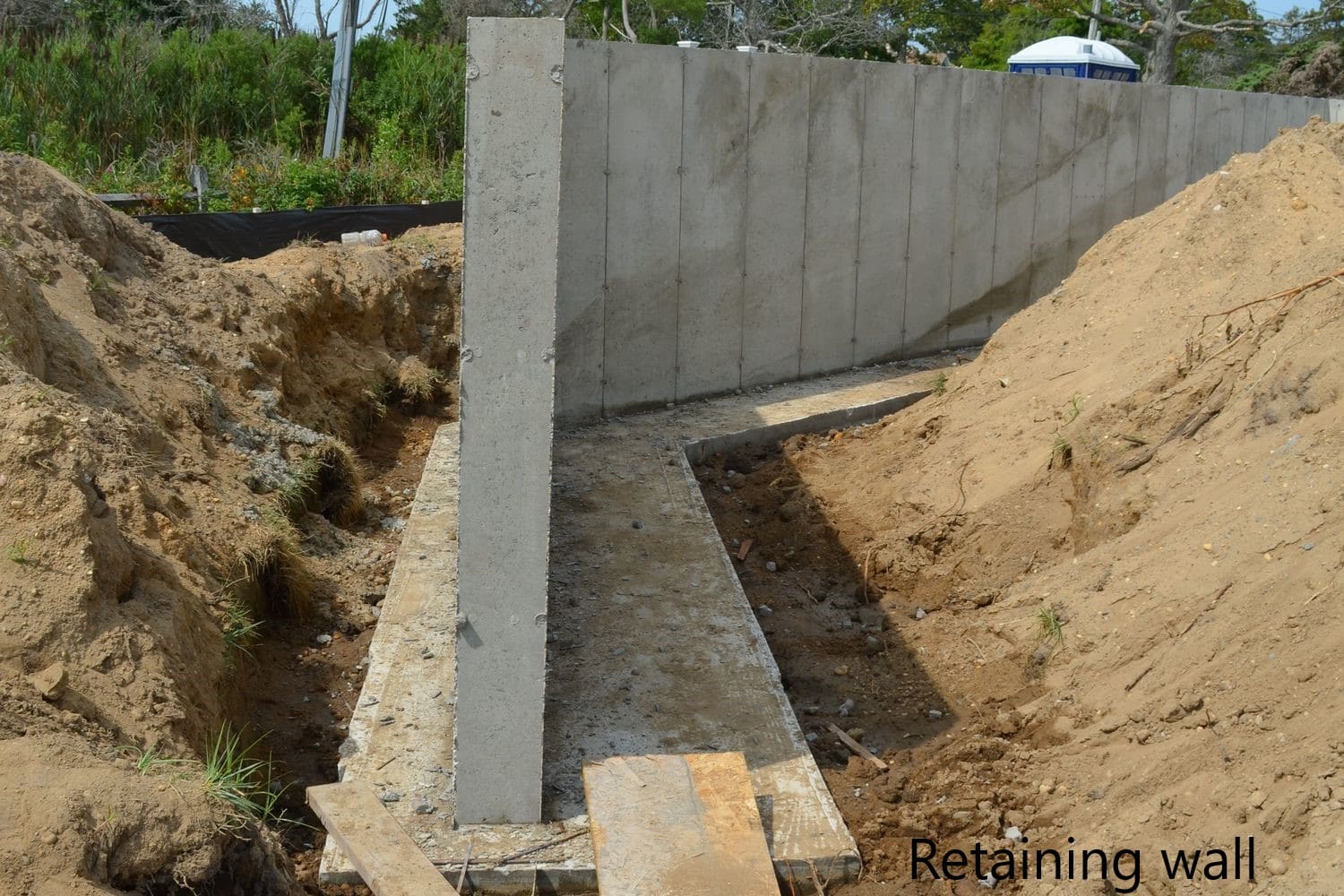
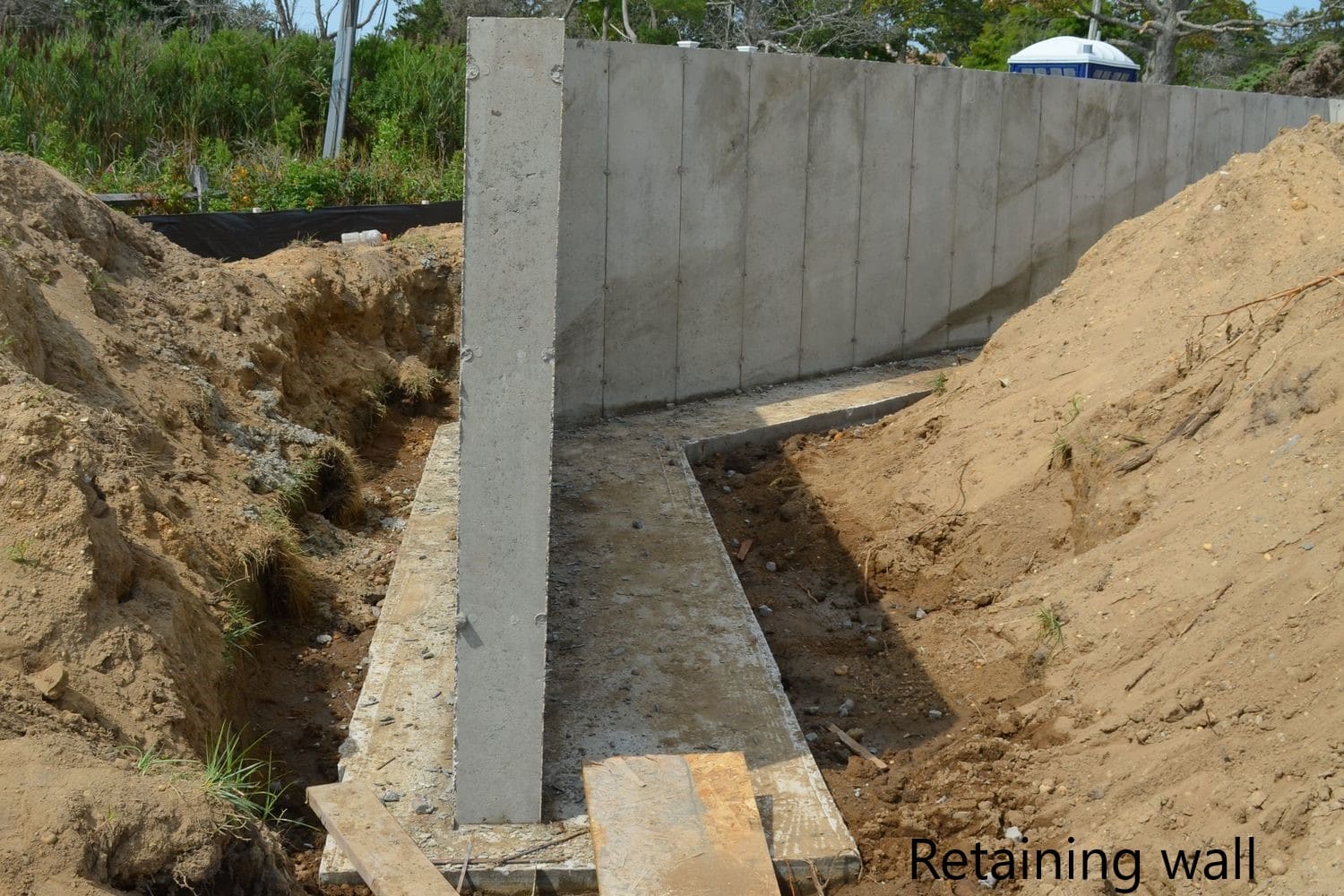
When at rest, there is no movement of the structure. In general, the lateral pressure applied to the structure is greater than the active pressure state.
When should we consider hibernation?
According to the definition, the resting state does not represent movement of the structure. We can use the rest state in the following cases.
- We need a rigid structure with very low deflections. The resting pressure coefficient can be taken into account for calculations. The greater the pressure, the greater the bending moments and shear forces. Therefore, ensure a thicker section with a comparatively larger reinforcement area. Then the deflection is reduced.
- We use rest mode to design most hydraulic structures. These are mainly earth support structures. Furthermore, the movement of these structures affects the functionality of the mechanical utilities connected to these structures. For example, gate structures are attached to retaining walls and are usually taller structures, which can be around 10-20 m high. Due to the height of the structures, deflection at the top is significant, which may not be acceptable for mechanical utilities. Therefore, we design them for higher pressures to minimize lateral deflections.
- Furthermore, due to several factors, active pressure tends to increase over time. This is also taken into account in these types of structures.
- Hibernation is considered for structures that cannot be moved due to constraints. For example, a retaining wall that is connected to a building and does not allow significant deformation. It is advisable to take dormancy into account, as this can develop over time due to restrictions on circulation in the soil.
Rated loads
All structures must be designed for fictitious loads. This is the minimum load placed on a structure. It also covers all design errors, moment distributions, etc. However, it is observed that when designing buildings, people often forget to consider fictitious loads as lateral loads.
For small structures, we apply the dummy loads to the building as horizontal loads during the analysis.
When wind loads become critical, we compare the considered wind load with the national load and consider the most critical value for the analysis.
Notortiona loads are calculated considering half the height above ground and below ground from one floor to another. All permanent loads that fall within this range are taken into account in the calculation. 1.5% of the weight is exerted as a horizontal force on that specific floor. Likewise, loads are calculated for all floors and from the ground floor to the roof level. These loads must be applied after the critical load case has been determined as mentioned above.

